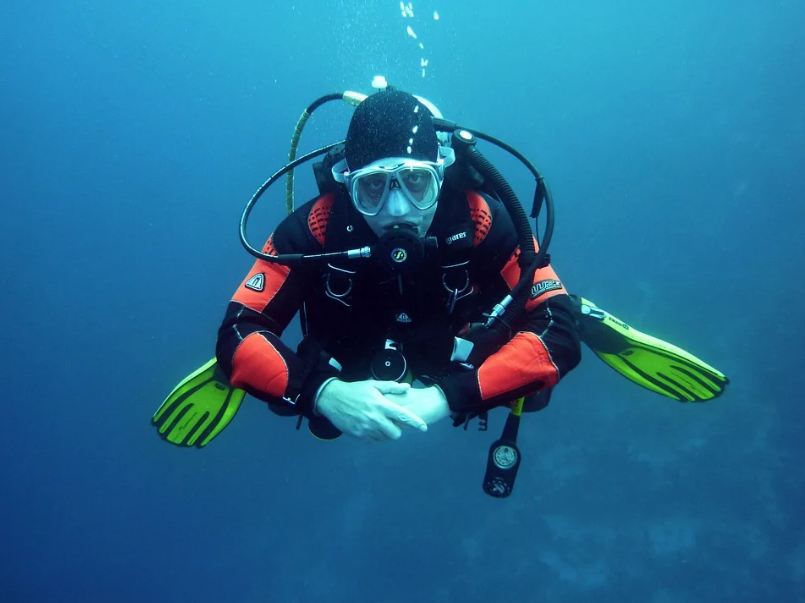Vietnam is a paradise for divers and non-divers with its stunning natural beauty, friendly locals, delicious cuisine, pristine beaches, and rich culture. The country offers a 2000-mile coastline with practically untouched waters, many varieties of marine creatures small and large, and accessibility throughout the year.
Vietnam has four main diving regions, Con Dao, Whale Island, Nha Trang, and Phu Quoc. Nha Trang boasts the most dive sites since it’s the most developed, but the other three are also continuously being explored, and there are new site discoveries all the time, making it reason enough for divers to come back again and again.
Here are some of the best diving spots in Vietnam.
Ho Trau Nam
This dive site is one of the most popular dives in the region. Also known as the Three King Island, three peaks rise from Ho Trau Nam’s seabed to break the surface. A phantasmagoria of yellow, white, and purple gorgonians and corals adorn the area, creating the perfect backdrop for photography.
Things to see
- Manta Rays
- Eagle Rays
- Stingrays
- Sea Slugs
Hun Trung
The site’s exposed position on Con Dao’s northern edge places it in a position with powerful currents. For this very reason, Hun Trung is only for divers who are more experienced. Sea fans and beautiful corals carpet its walls, and the excellent news is that the fast current brings with it bigger pelagics. Hun Trung is best enjoyed from a depth of 15-20m/50-65ft, though its maximum depth is 40m/130ft.
Things to see
- Tuna
- Mackerel
- Barracuda
- Passing sharks and dolphins
Hon Nhan
Recognized as one of the best dive sites around the Cham Islands, Hon Nhan consists of a pinnacle, which bottoms out at about 40m/130ft. Its caverns, sudden drop-offs, and fantastic rock formations make for a magnificent topography populated by an assemblage of marine life.
Things to see
- Nudibranch
- Seahorses
- Crabs
- Barracudas
- Ribbon Eels
Fish Highway
The country isn’t known for its wrecks, though Fish Highway is comprised of the wreckage of a fishing boat lying around 28m/92ft of water. Its steel hull is covered in coral and sponges and has become the base of the very fish the fishermen who used the boat hunt. The site has grown to be a solid favorite with photographers.
Things to see
- Groupers
- Angelfish
- Moorish idols
- Morays
- Stonefish
- Scorpionfish
Madonna Rock
Madonna Rock’s topography makes this site an actual adventure playground. Caverns and swim-throughs cut through two pinnacles at different depths with a maximum depth of 25m/82ft. With a combination of soft and hard coral encases on the rock, Madonna Rock is a site all divers can enjoy.
Things to see
- Glassfish
- Morays
- Octopus
- Unicornfish
- Flatworms
- Cobia Rays
The Cave
The Cave’s main feature is its reef, which slopes down to 25m/82ft. This reef gives way to a cave you can find at around 6-9m/20-30ft. All divers of any level can head out to the swim-through and enter the reef.
Things to see
- Lionfish
- Clownfish
- Feather Stars
- Triggerfish
- Worms
Hon Ko (Dry Island)
The several rocks that you see on the surface at Hon Ko may not look like much, but once you go beneath the waves, a stunning reef system will meet you. The beautiful hard corals are teeming with life.
Things to see
- Miter Shells
- Catfish
- Cuttlefish
- Octopus
- Bamboo Sharks
- Nudibranchs
- Turtle
- Small reef sharks
Electric Nose
The main feature of this dive site is a massive pinnacle springing from 50m/164ft to the surface. A sheet of soft coral renders a diverse ecosystem with plenty of macro life.
With a crave enveloped in yellow sunflower coral and a picturesque reef to explore, Electric Nose is a dive site that most divers will visit more than once.
Things to see
- Over 50 species of nudibranch
- Corals
- Crabs
- Shrimps
- Flatworms
White Rock
What makes White Rock an exhilarating dive site is its sheer vertical walls that drop from the surface down to 40m/130ft and the large pinnacles extending from the bottom. Coral trees and dark-colored gorgonians cover the depths forming a mysterious and eerie environment.
White Rock may be the most distant dive site from Whale Island, but it’s definitely worth traveling.
Things to see
- Black Rays
- A variety of marine animals
Lobster Beach
If you like lobsters, then you’ll love Lobster Beach. A maximum depth of 16m/52ft and scattered coral formations have given the ideal conditions for these crustaceans.
Also, the site was once a breeding ground for turtles before environmental damage and humans drove them away. Thanks to the Lobster Beach being protected, the turtle numbers are increasing, and some are going back to reproduce.
Things to see
- Lobsters
- Trumpetfish
- Dragonets
- Mantis Shrimps
Turtle Island South
Turtle Island South brings experienced divers something entirely different from the North dive site with the same name. Stronger depths and deeper currents reel in the bigger marine species.
The coral covering is vibrant and colorful, and it’s obvious why this dive site is so popular among divers.
Things to see
- Small critters
- Barracuda
- Eagle Rays
- Sharks
- Schools of Snapper
- Schools of Tuna
- Stingrays
